Ukrainians set their sights on revenge in battle for the Black Sea coast
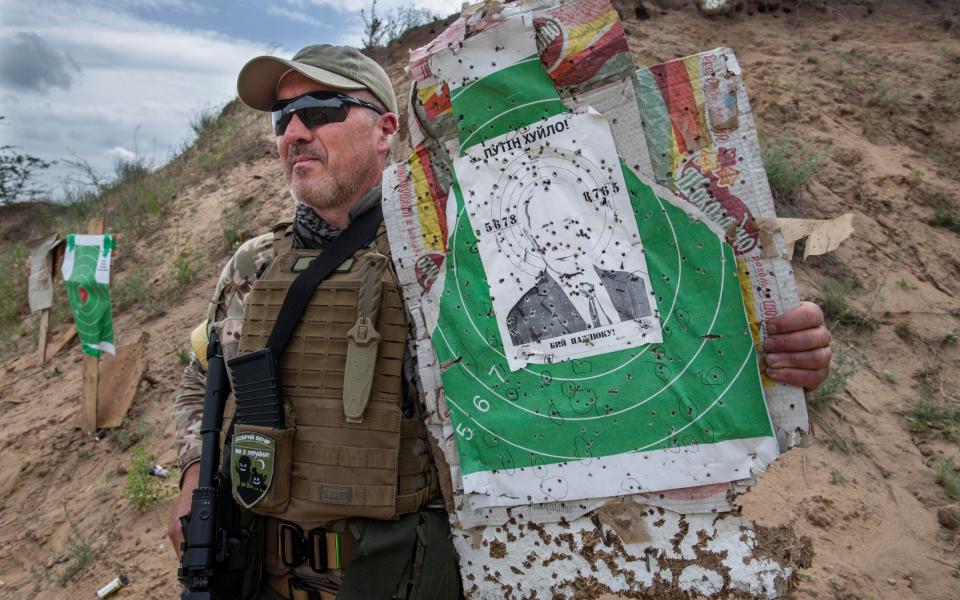
At their base in no-mans’ land outside Ukraine’s southern city of Mykolaiv, volunteers with the Kherson Brigade hone their shooting skills on a paper target of Vladimir Putin. Dozens of bullet holes pepper the Russian leader’s face – one they’d much rather practise on in person.
Barring that, though, they have another way of getting revenge – and getting their own lives, loves and homes back in the process. For to the east, across 50 miles of heavily contested territory, is their home city of Kherson, which fell to the Russians at the very start of the war.
“We defended Kherson as much as we could, but we were outgunned, so pulled back to defend Mykolaiv and the rest of Ukraine,” says one brigade member, who goes by the nom de guerre of “Helicopter”. “Now we want to take it back.”
To do that though, Helicopter and his comrades must prevail on the Southern Front – the battle with Russia for control over Ukraine’s Black Sea coast. Internationally, it attracts far less attention than the fighting in the eastern Donbas region further north. Strategically, it is crucial for both sides.
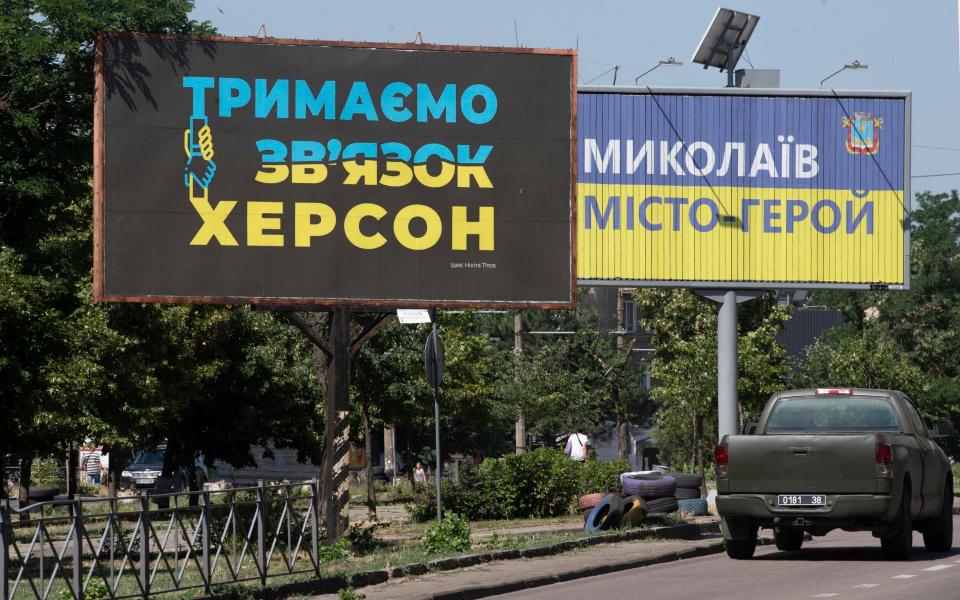
For the Russians, Kherson is the only major city they control on the west side of Ukraine’s River Dnipro, which divides the country into east and west. It offers a launch point from which to capture Mykolaiv – where an assault in February failed – and then head west to take Odesa, Ukraine’s main commercial port. That would leave the country landlocked, and facing economic ruin.
For the Ukrainians, capturing Kherson means liberating an estimated 150,000 citizens currently living there under Russian occupation. But the objectives would not stop there. Kherson would in turn be a potential launch point into Crimea, retaking the peninsula that Putin annexed back in 2014.
Meanwhile, the two armies are slugging it out in the turf between Mykolaiv and Kherson, a flat farming plain that has become a Flanders on the steppe. Artillery battles rage for control of tiny, deserted hamlets - some now flattened, with uncollected corpses in the streets. Soldiers crawl through fields on perilous recon missions, hoping to avoid booby-trapped hedgerows and enemy drones. The Black Sea summer heat is stifling. And with neither side making a breakthrough yet, bases like the Kherson Brigade’s already have a semi-permanent look.
Operating from a disused farmhouse, they have a kitchen stacked with cabbages and onions, and some old settees under a veranda where tea is served. Helicopter’s comrade Eduard Leonov, who plays in a folk band, even has his guitar.

“We are shelling the Russian positions and trying to clear the sections they occupy, but it’s a slow process,” Helicopter added, as artillery sounded in the distance. “They’re well-dug in their trenches, and they’ve planted a lot of landmines.”
A snapshot of the battle’s slow grind is the current ferocious scrap for Davydiv Brid, a hamlet of 1,200 people next to a shallow river crossing on the border between Mykolaiv and Kherson districts. Its name translates roughly as “David’s Ford”.
In a push last month, Ukrainian forces in Soviet T-64 tanks and fighting vehicles fought their way towards it, freeing 20 other settlements in the process. But Davydiv Brid itself remains in Russian hands, according to Roman Kostenko, a local MP who is also a Ukrainian paratrooper.
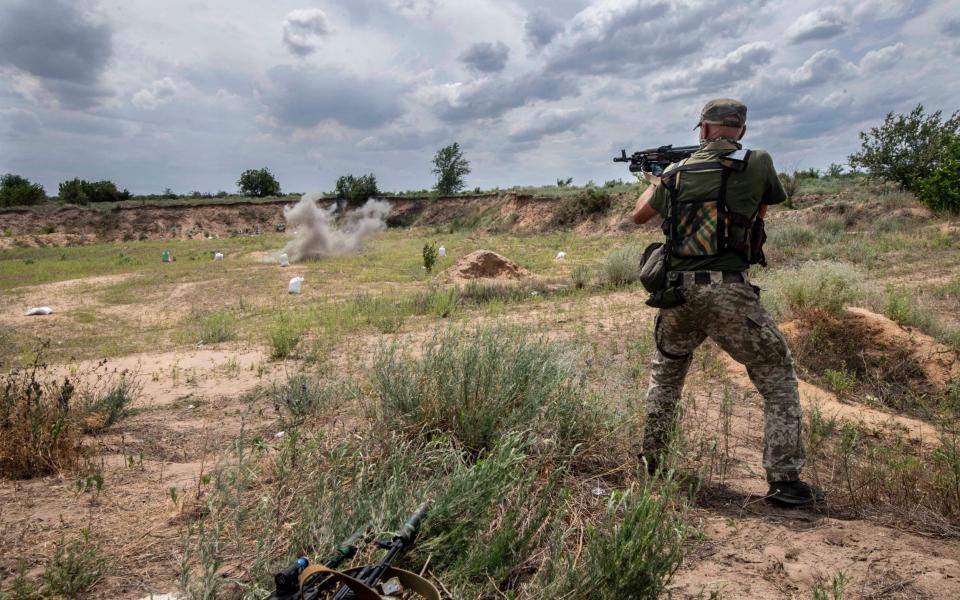
“We’ve done well to get even near to Davydiv Brid,” said Mr Kostenko, whose house in a neighbouring village has been gleefully looted by the invaders. “But it’s on a hill, which makes it easy for the Russians to defend.”
Taking Davydiv Brid would bring Ukrainian forces within striking distance of the T2205, a highway that the Russian garrison in Kherson relies on for resupply from the east. As with the Donbas battle, though, southern front commanders say they will only succeed if they get many more Western weapons.
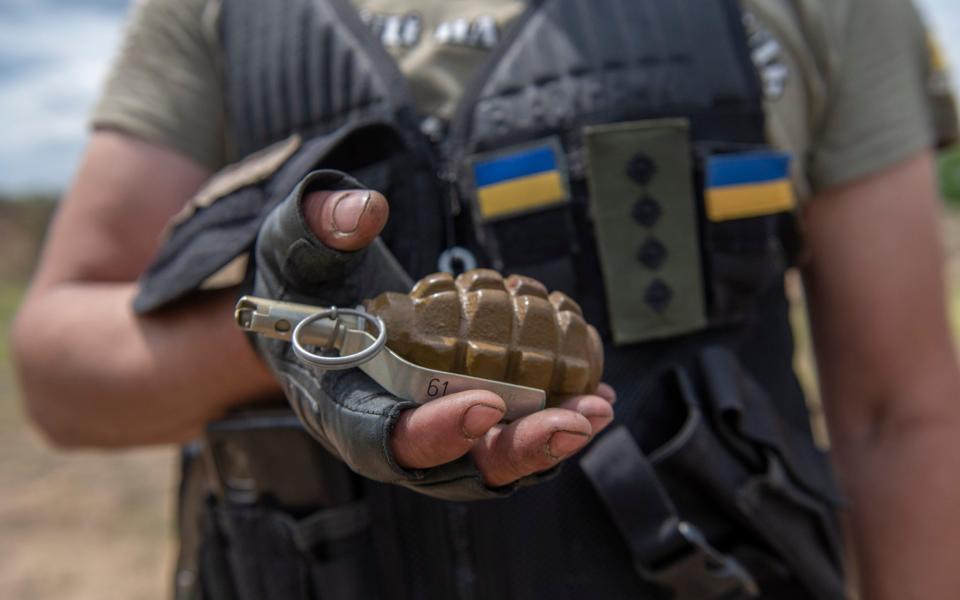
“Please tell this to the people of Britain,” pleaded Mr Kostenko. “For every few artillery systems we have, the Russians have hundreds.”
The spearhead force attacking Davydiv Brid is better equipped than most. Volunteer outfits like the Kherson Brigade have mainly just rifles, and rely partly on “roadkill” weapons picked up from retreating Russian forces. At their HQ, for example, a half-dismembered anti-tank mine sits in a hallway, looking at first glance like an extremely hazardous doorstop.
“We are trying to get it fixed so that we can use it,” said Mr Leonov, who is also trying to repair a Russian bazooka that sits next to his guitar. “We have to take anything we can get.”
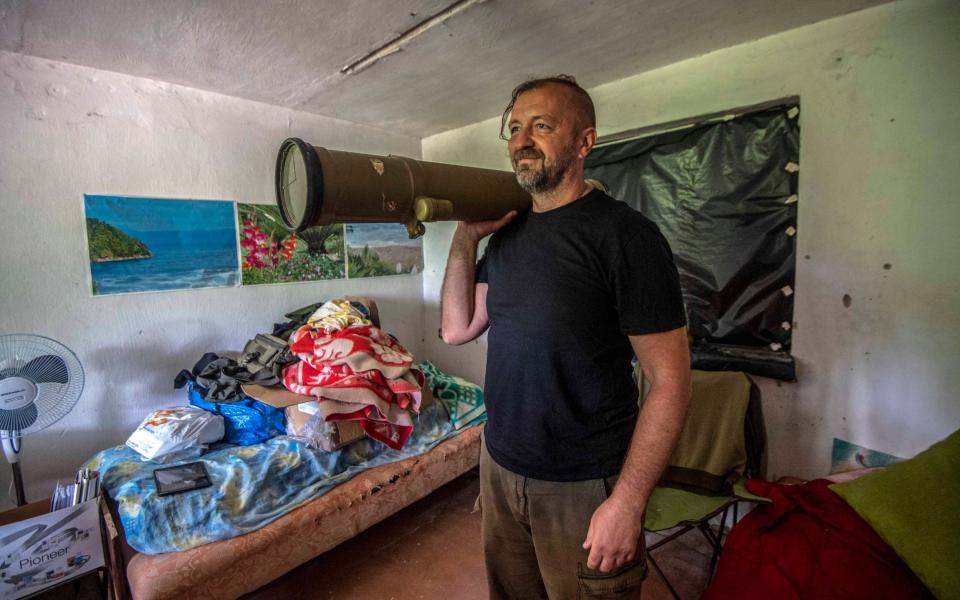
Mr Leonov and Helicopter at least have experience in combat, having fought in the Donbas in 2014. Many of the other soldiers are newly enlisted civilians, for whom old-school trench warfare can be as demoralising as it is terrifying.
“The village near our base can get shelled 350 times in a day, and we have no response,” one volunteer said.
“People are asking themselves: ‘why am I here waiting to die?’ But our commander does at least talk to us, saying ‘sorry guys, we have nothing, help is on the way. So people trust him, and fight.
“Some have trouble with alcohol or discipline – we aren’t trained warriors. But we do our job with passion, even though it’s very heavy going – the brigade we replaced lost half its men.”
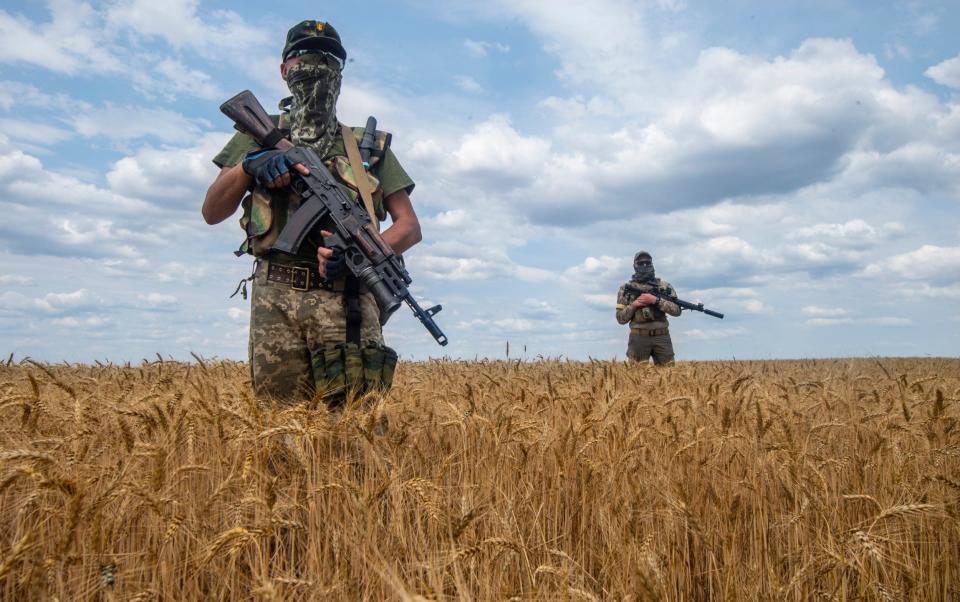
Most days, he added, were spent doing “spotting” missions on enemy movements. If the “spotters” themselves were spotted, the Russians would deploy an entire artillery battery to take them out.
“They used two full batteries of Uragans [truck-launched missile systems carrying 16 five-metre-long missiles] to take out just two Ukrainian guys doing a drone recon,” he said. “They have so many missiles, they use them just like bullets.”
The talk now is of the Ukrainian counter-offensive intensifying next month, heralding an-out push to retake occupied Kherson. While Kyiv’s forces will be reluctant to shell their own city from outside, they are hopeful of a popular uprising from within Kherson. Ukrainian partisans have recently started insurgent attacks there, bombing cafes used by Russian troops and assassinating Kremlin officials.
Then again, the Kremlin could launch its own push towards Mykolaiv first. One British military volunteer serving on the Southern Front told The Telegraph: “If we don’t do a push, the Russians will – their tanks could roll right now across these fields if they wanted to.”
“If they get Mykolaiv and Odesa ports, they can choke Ukraine into submission. You don’t have to win a war by occupying a country completely.”

What happens on the southern front is also influenced by the battle further north in Donbas. Some even speculate that the reason Ukraine has fought so hard for Donbas towns like Severodonetsk is to tie Putin’s troops there while they retake Kherson.
Apart from Mariupol 250 miles east – which is largely destroyed – Kherson is the only major Ukrainian city under Russian rule. A successful liberation – complete with jubilant crowds – would turbo-charge Ukrainians’ morale.
Particularly happy will be men like Helicopter, who has a score to settle not just with Putin, but also his fellow Ukrainians. Some of them believe the reason Kherson fell in the first place was because its people were pro-Russian, a point he is keen to prove them wrong on.
“We are not here by government order, we are volunteers, Ukrainian patriots,” he said. “Nor are we child-eating maniacs like Putin thinks we are. We’re just ordinary, peaceful people who elect our own leaders and live our own lives – without anyone else interfering.”

 Yahoo Movies
Yahoo Movies 